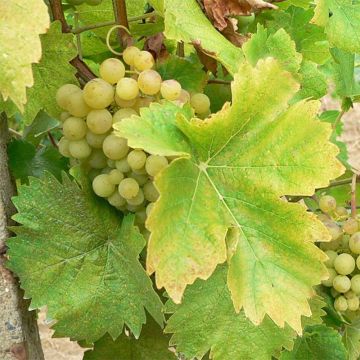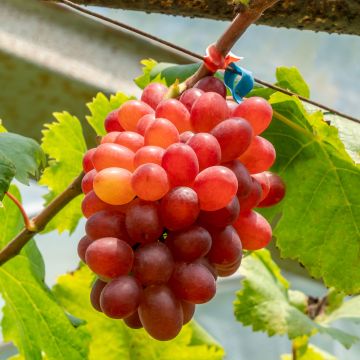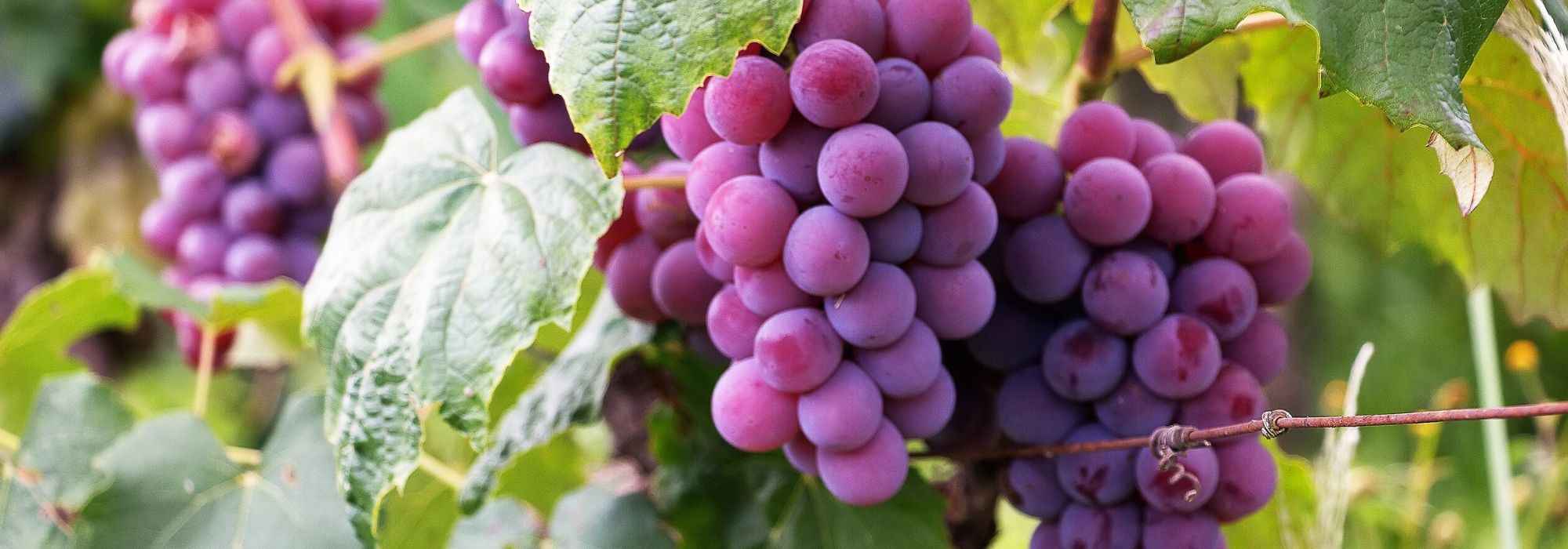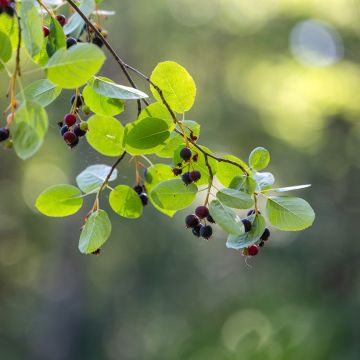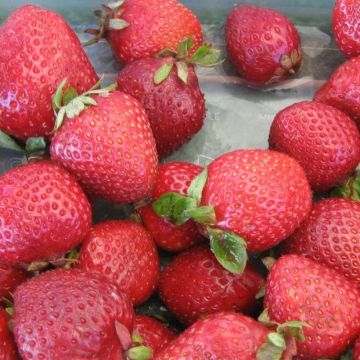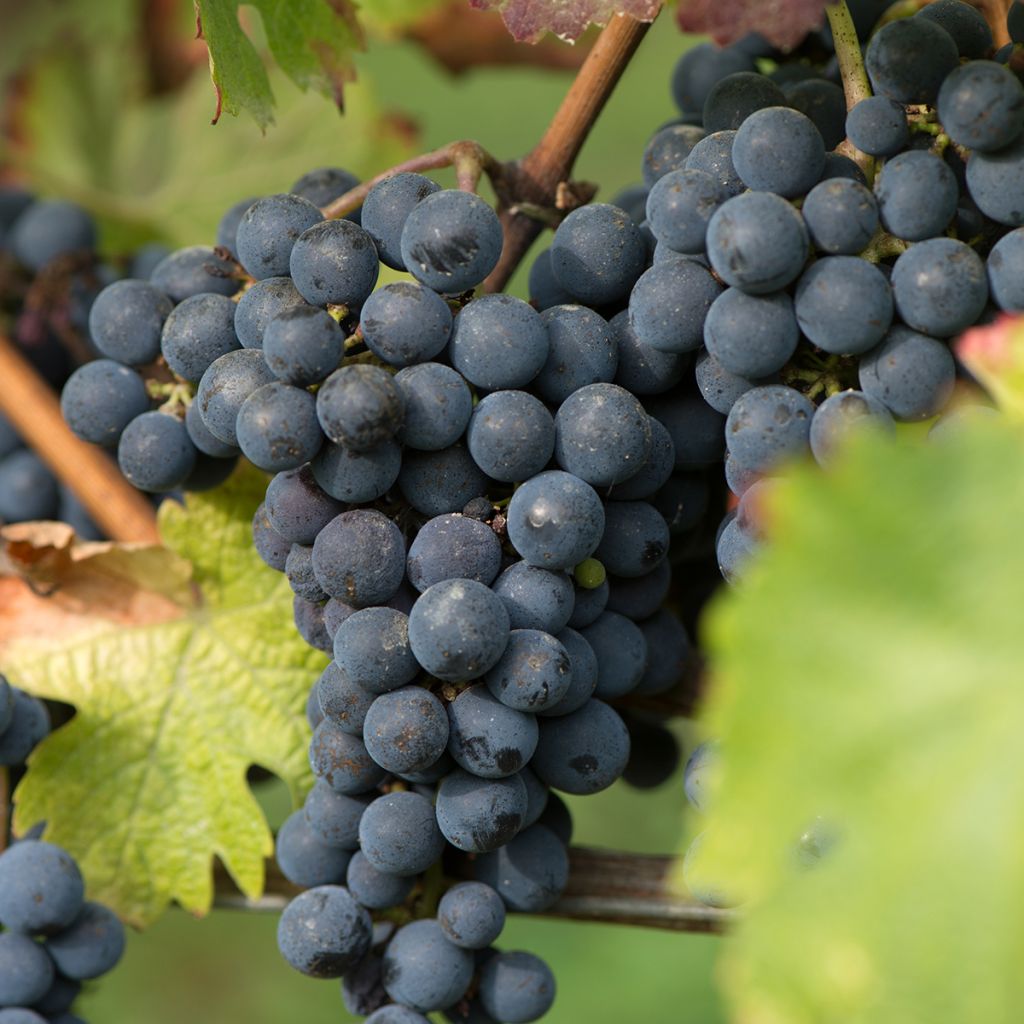

Vitis vinifera New York Muscat - Grapevine
Vitis vinifera New York Muscat - Grapevine
Vitis vinifera New York Muscat
Grapevine, Common Grape Vine, European Grape
Special offer!
Receive a €20 voucher for any order over €90 (excluding delivery costs, credit notes, and plastic-free options)!
1- Add your favorite plants to your cart.
2- Once you have reached €90, confirm your order (you can even choose the delivery date!).
3- As soon as your order is shipped, you will receive an email containing your voucher code, valid for 3 months (90 days).
Your voucher is unique and can only be used once, for any order with a minimum value of €20, excluding delivery costs.
Can be combined with other current offers, non-divisible and non-refundable.
Home or relay delivery (depending on size and destination)
Schedule delivery date,
and select date in basket
This plant carries a 6 months recovery warranty
More information
We guarantee the quality of our plants for a full growing cycle, and will replace at our expense any plant that fails to recover under normal climatic and planting conditions.
Description
The Vine 'New York Muscat' is generally grown and consumed as a table grape, but it can also be used for winemaking. It is also known for its strong resistance to fungal diseases such as mildew and powdery mildew. This variety produces medium to large, compact and rather heavy clusters of fairly large berries that turn blue to black when ripe. With a remarkable Muscat aroma, their sweet taste is deep and very pleasant, without bitterness. This non-astringent grape has a thin skin that clings well to the pulp, offering crunchy grains. Harvesting will begin around early September in southern regions and around mid-September in northern regions.
The wine grape, in Latin Vitis vinifera, belongs to the Vitaceae family, just like the Virginia creeper. It has been cultivated for thousands of years in North Africa, the Middle East, the Caucasus, and Europe. Between 1000 and 500 BC, it was introduced by the Romans to Italy, Sicily, Spain, Portugal, and southern France. During this ancient period, wines were diluted with water and flavoured with herbs and spices. Wine as we know it was first produced in the Middle Ages. In the 17th century, winemaking shifted towards the search for higher quality wines, but at the end of the 19th century, phylloxera destroyed a large part of the French vineyards, leading to the emergence of the science of wine: oenology. This species is cultivated for its clustered fruits called "grapes," which can be consumed fresh as table grapes, fermented into wine, or dried as raisins.
The variety 'New York Muscat', sometimes called blue muscat, is also known by its breeding number: New York 12997. It is the result of an interspecific cross between the famous Muscat de Hambourg, widely grown commercially but susceptible to diseases, and the American vine Ontario, resistant to diseases but with a typical foxy taste (an odour reminiscent of fox, crushed bug, venison). The result is an interesting combination of the two: a grape that resembles Muscat de Hambourg while being disease-resistant. This hybrid was created in 1926 by Richard Wellington at the Grape Breeding Institute of Cornell University in Geneva, New York (USA). Its protection as a plant variety was granted in 1961. Grown in the form of a trellis, the plant produces long, woody, and climbing shoots, called canes when they are mature and woody, which can reach 4 to 6 metres in spread, or even more when trained. The young shoots that bear the leaves, fruits, and tendrils that allow the vine to cling to a support are called shoots. Its root system can reach a depth of up to 5 metres in the soil, providing the vine with good drought resistance. The shoots are supported by a twisted trunk with bark that peels off in strips with age. The remarkably long-lived vine can live for several centuries. Its deciduous foliage consists of alternate large leaves, 8 to 16 cm wide, with 5 or 7 lobes, and serrated edges, attached to the shoots by a long petiole. They change from light green at bud burst to medium green during the season, and turn shades of golden yellow, orange, and reddish-purple in autumn, offering a colourful spectacle. Flowering occurs in May opposite the leaves, as a cluster measuring 8 to 12 cm long, composed of small insignificant, yellowish-green flowers, with 5 prominent stamens. As a self-fertile variety, the hermaphroditic flowers self-pollinate. To form the cluster, the fleshy and round berries are attached to the stem by small pedicels. The flower buds freeze at temperatures below -2°C, but the late flowering of this variety is not very susceptible to spring frosts. This hardy plant can be grown in sunny and warm locations, in well-drained, deep, even poor, dry, and limestone soils.
The 'New York Muscat' vine is a productive and vigorous variety, with a quick fruiting period, around 2 to 3 years, reaching its optimal production after 7 to 8 years. However, it is advisable to prune it sparingly to avoid exhausting it. To achieve a beautiful fruit colouration, light leaf removal can be practised. The uniform and abundant harvest, takes place in September, with variations depending on the region and climate. It is important to only pick the fruits when they are ripe, as they do not ripen further, and to gently harvest the cluster with its pedicel using pruning shears. One plant can produce 20 to 30 kg per year, which varies depending on vine management. Grapes can only be stored for a few days in a cool place or in the refrigerator.
Firm, juicy, sweet, slightly acidic, 'New York Muscat' is delicious when eaten raw. It is also an ideal fruit for making jam, jelly, and fruit juice; for making clafoutis, cakes, custards, or cakes; for making salads with other fruits; or for accompanying savoury poultry dishes (turkey, chicken, quail, duck...). It pairs perfectly with cheese, endives, walnuts, and cured ham... Grapes are rich in carbohydrates (glucose and fructose) from 16 to 18 g per 100 g, a calorie-dense fruit (approx. 80 Cal/100 g). Their content of vitamins B (B2, B6) and C, phenolic antioxidants, fibres, manganese, potassium, calcium, magnesium, with a significant iron content, make grapes a healthy choice. They are a healthy, natural, and tasty fruit.
In addition to its fruit, the New York Muscat Vine can be a decorative element when trained on a pergola, arbour, or wall. For urban cultivation, growing a vine in a pot on a balcony or terrace is possible when trained and well-maintained, in a sunny area, where it can be very ornamental. To enjoy its table grapes between August and October, it can be paired with other varieties, some earlier ones such as Chasselas doré, Chasselas rosé, Roi des précoces, Centennial Seedless, Perlette, Madeleine Royal, or later ones such as Alphonse Lavallée, Exalta, Muscat d'Alexandrie, Muscat de Hambourg, Sultanica bianca, among others. However, given the wide range of available grape varieties, it is easy to find the one that best suits one's taste.
Vitis vinifera New York Muscat - Grapevine in pictures


Plant habit
Fruit
Flowering
Foliage
Botanical data
Vitis
vinifera
New York Muscat
Vitaceae
Grapevine, Common Grape Vine, European Grape
Cultivar or hybrid
Other Grapevines
View all →Planting and care
Plant the 'New York Muscat' vine in autumn, in a deep, well-drained, even stony, arid, poor and chalky soil, in a sunny location, sheltered from strong winds. Incorporate 3 or 4 handfuls of fertiliser for fruit trees and 2 kg of composted manure for each vine into the planting soil. The roots should not come into contact with the manure. After planting, prune above 2 large buds (buds) to encourage the growth of two branches. Keep the most vigorous shoot and tie it to a stake. Training pruning, in a vertical cord, will be detailed further down.
The vine does not require regular fertiliser application for good yield, on the contrary. Enrich the soil with potash, crushed horn or iron chelate, only every 2-3 years.
The New York Muscat vine is naturally resistant to fungal diseases, especially Powdery Mildew. It does not require regular treatments. The most commonly encountered vine pests are grapevine moths (Cochylis) and Eudemis (grape berry moth), which should be treated with insecticide twice during the growing season, with a fifteen-day interval. There is also mildew (oil spots on the leaf, underside with a white down) and Botrytis grey rot (mould on the berries in humid weather). For these two fungal diseases, use Bordeaux mixture at the first symptoms. Treat alternately with sulfur against powdery mildew (white-grey felting on the top of the leaves), in good but not too hot weather.
Since the devastation caused by phylloxera in the late 19th century, the vine must be grafted onto different rootstocks resistant to this disease and adapted to different types of soil. These rootstocks come from American varieties naturally armed against this formidable parasite which is itself of American origin.
Planting period
Intended location
Care
Planting & care advice
This item has not been reviewed yet - be the first to leave a review about it.
Similar products
Haven't found what you were looking for?
Hardiness is the lowest winter temperature a plant can endure without suffering serious damage or even dying. However, hardiness is affected by location (a sheltered area, such as a patio), protection (winter cover) and soil type (hardiness is improved by well-drained soil).

Photo Sharing Terms & Conditions
In order to encourage gardeners to interact and share their experiences, Promesse de fleurs offers various media enabling content to be uploaded onto its Site - in particular via the ‘Photo sharing’ module.
The User agrees to refrain from:
- Posting any content that is illegal, prejudicial, insulting, racist, inciteful to hatred, revisionist, contrary to public decency, that infringes on privacy or on the privacy rights of third parties, in particular the publicity rights of persons and goods, intellectual property rights, or the right to privacy.
- Submitting content on behalf of a third party;
- Impersonate the identity of a third party and/or publish any personal information about a third party;
In general, the User undertakes to refrain from any unethical behaviour.
All Content (in particular text, comments, files, images, photos, videos, creative works, etc.), which may be subject to property or intellectual property rights, image or other private rights, shall remain the property of the User, subject to the limited rights granted by the terms of the licence granted by Promesse de fleurs as stated below. Users are at liberty to publish or not to publish such Content on the Site, notably via the ‘Photo Sharing’ facility, and accept that this Content shall be made public and freely accessible, notably on the Internet.
Users further acknowledge, undertake to have ,and guarantee that they hold all necessary rights and permissions to publish such material on the Site, in particular with regard to the legislation in force pertaining to any privacy, property, intellectual property, image, or contractual rights, or rights of any other nature. By publishing such Content on the Site, Users acknowledge accepting full liability as publishers of the Content within the meaning of the law, and grant Promesse de fleurs, free of charge, an inclusive, worldwide licence for the said Content for the entire duration of its publication, including all reproduction, representation, up/downloading, displaying, performing, transmission, and storage rights.
Users also grant permission for their name to be linked to the Content and accept that this link may not always be made available.
By engaging in posting material, Users consent to their Content becoming automatically accessible on the Internet, in particular on other sites and/or blogs and/or web pages of the Promesse de fleurs site, including in particular social pages and the Promesse de fleurs catalogue.
Users may secure the removal of entrusted content free of charge by issuing a simple request via our contact form.
The flowering period indicated on our website applies to countries and regions located in USDA zone 8 (France, the United Kingdom, Ireland, the Netherlands, etc.)
It will vary according to where you live:
- In zones 9 to 10 (Italy, Spain, Greece, etc.), flowering will occur about 2 to 4 weeks earlier.
- In zones 6 to 7 (Germany, Poland, Slovenia, and lower mountainous regions), flowering will be delayed by 2 to 3 weeks.
- In zone 5 (Central Europe, Scandinavia), blooming will be delayed by 3 to 5 weeks.
In temperate climates, pruning of spring-flowering shrubs (forsythia, spireas, etc.) should be done just after flowering.
Pruning of summer-flowering shrubs (Indian Lilac, Perovskia, etc.) can be done in winter or spring.
In cold regions as well as with frost-sensitive plants, avoid pruning too early when severe frosts may still occur.
The planting period indicated on our website applies to countries and regions located in USDA zone 8 (France, United Kingdom, Ireland, Netherlands).
It will vary according to where you live:
- In Mediterranean zones (Marseille, Madrid, Milan, etc.), autumn and winter are the best planting periods.
- In continental zones (Strasbourg, Munich, Vienna, etc.), delay planting by 2 to 3 weeks in spring and bring it forward by 2 to 4 weeks in autumn.
- In mountainous regions (the Alps, Pyrenees, Carpathians, etc.), it is best to plant in late spring (May-June) or late summer (August-September).
The harvesting period indicated on our website applies to countries and regions in USDA zone 8 (France, England, Ireland, the Netherlands).
In colder areas (Scandinavia, Poland, Austria...) fruit and vegetable harvests are likely to be delayed by 3-4 weeks.
In warmer areas (Italy, Spain, Greece, etc.), harvesting will probably take place earlier, depending on weather conditions.
The sowing periods indicated on our website apply to countries and regions within USDA Zone 8 (France, UK, Ireland, Netherlands).
In colder areas (Scandinavia, Poland, Austria...), delay any outdoor sowing by 3-4 weeks, or sow under glass.
In warmer climes (Italy, Spain, Greece, etc.), bring outdoor sowing forward by a few weeks.

































